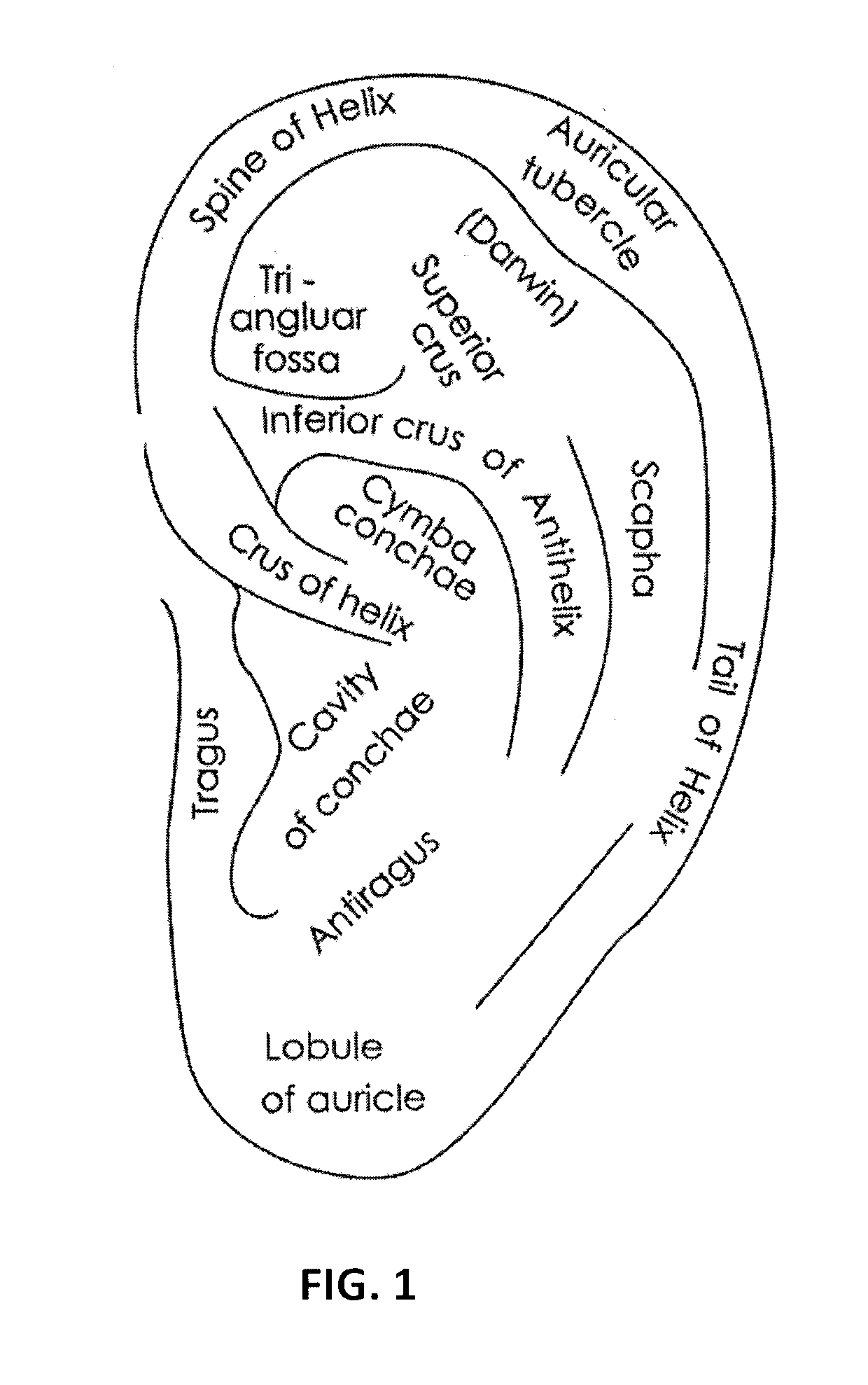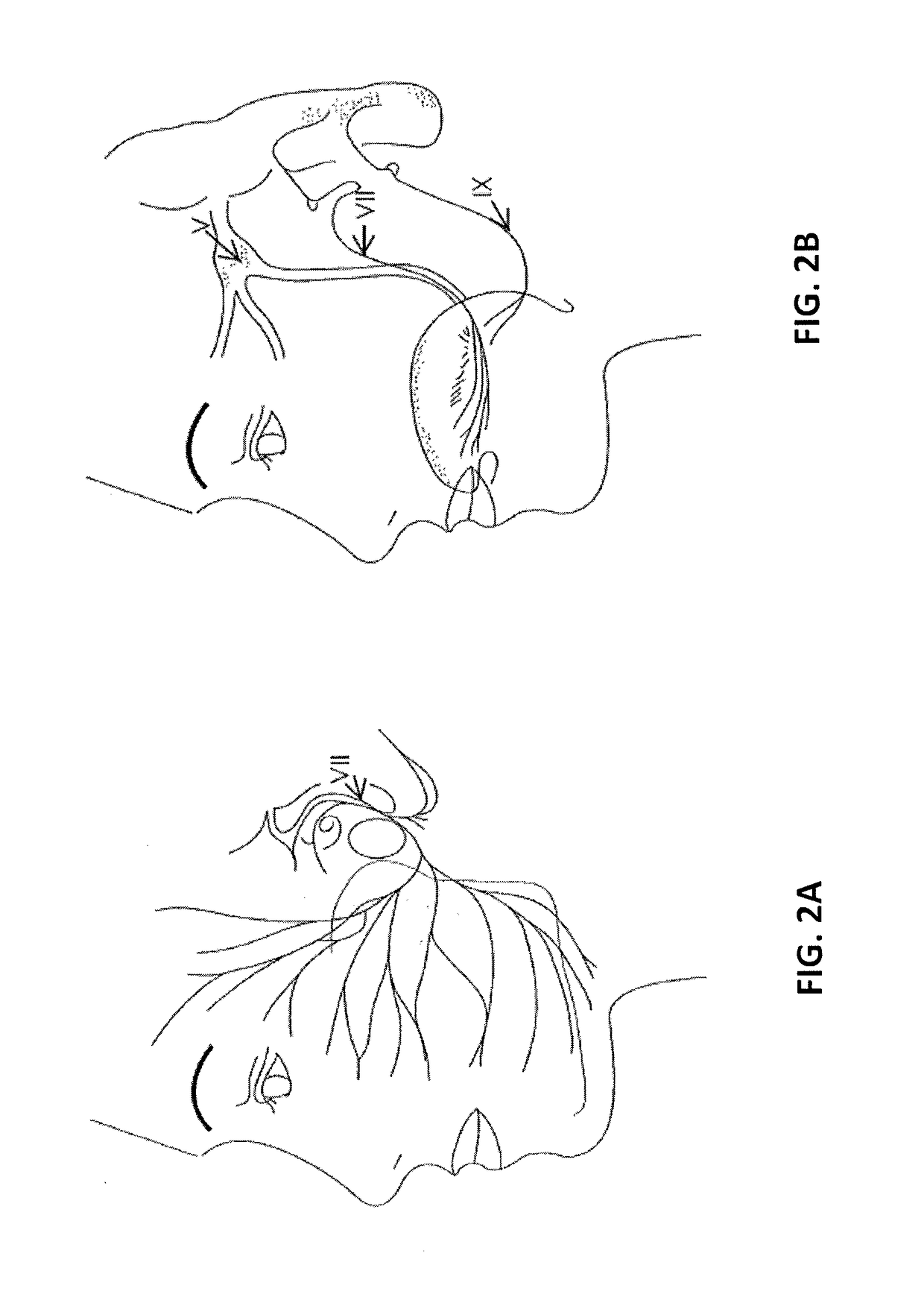Treatment of bleeding by non-invasive stimulation
a non-invasive stimulation and bleed technology, applied in the field of bleeding treatment by non-invasive stimulation, can solve the problems of desensitization of the inhibitory effect of the inflammation reflex, the short non-invasive duration of the non-invasive stimulation, and the limited application of non-invasive stimulation, so as to reduce the bleed time in the subject, reduce the proinflammatory cytokines, and reduce the effect of proinflammatory cytokines
- Summary
- Abstract
- Description
- Claims
- Application Information
AI Technical Summary
Benefits of technology
Problems solved by technology
Method used
Image
Examples
example 1
Non-Invasive Mechanical Stimulation of Vagus Nerve Reduces Serum TNF Level During Lethal Endotoxemia in Mice
[0137]BALB / c mice received an LD50 dose of endotoxin (7.5 mg / kg i.p.) five minutes prior to cervical massage.
[0138]The cervical massage was administered as follows. BALB / c mice were anesthetized with isoflurane and positioned as described above. Following a left submandibular sialoadenectomy and skin closure, animals received transcutaneous vagus nerve stimulation via cervical massage. Cervical massage was performed using alternating direct pressure applied perpendicularly and directly adjacent to the left lateral border of the trachea, using a cotton-tipped applicator. Each pressure application was defined as one stimulus. The number of stimuli was quantified by frequency and time. The lowest dose cervical massage group underwent 40 seconds of stimulation at 0.5 stimuli per second (20 total stimuli). The middle dose cervical massage group underwent two minutes of stimulation ...
example 2
Non-Invasive Mechanical Stimulation of Vagus Nerve Reduces HMGB1 Levels in Septic Mice
[0141]Serum HMGB1 levels were determined in BALB / c mice subjected to cecal ligation and puncture (CLP). CLP was performed as follows.
[0142]Balb / c mice were anesthetized with 75 mg / kg Ketamine (Fort Dodge, Fort Dodge, Iowa) and 20 mg / kg of xylazine (Bohringer Ingelheim, St. Joseph, Mo.) intramuscularly. A midline incision was performed, and the cecum was isolated. A 6-0 prolene suture ligature was placed at a level 5.0 mm from the cecal tip away from the ileocecal valve.
[0143]The ligated cecal stump was then punctured once with a 22-gauge needle, without direct extrusion of stool. The cecum was then placed back into its normal intra-abdominal position. The abdomen was then closed with a running suture of 6-0 prolene in two layers, peritoneum and fascia separately to prevent leakage of fluid. All animals were resuscitated with a normal saline solution administered sub-cutaneously at 20 ml / kg of body ...
example 3
Non-Invasive Mechanical Stimulation of Vagus Nerve Reduces Clinical Signs of Sepsis
[0146]BALB / c mice were subjected to CLP procedure and non-invasive mechanical vagus nerve stimulation as described in Example 2.
[0147]Following the mechanical VN stimulation, clinical sepsis scores were determined 44 hours after the CLP procedure. Total clinical score (range 0 to 6) is composed of four components: presence or absence of diarrhea, piloerection, decreased activity level and spontaneous eye opening.
[0148]The data is presented in FIG. 6. A maximum score of six per animal denotes highest clinical sickness level. Data are presented as mean + / − sem (n=1 -6:**p<0.05).
[0149]As can be seen, mechanical VN stimulation results in nearly two-fold reduction of the clinical scores of septic mice.
PUM
 Login to View More
Login to View More Abstract
Description
Claims
Application Information
 Login to View More
Login to View More - R&D
- Intellectual Property
- Life Sciences
- Materials
- Tech Scout
- Unparalleled Data Quality
- Higher Quality Content
- 60% Fewer Hallucinations
Browse by: Latest US Patents, China's latest patents, Technical Efficacy Thesaurus, Application Domain, Technology Topic, Popular Technical Reports.
© 2025 PatSnap. All rights reserved.Legal|Privacy policy|Modern Slavery Act Transparency Statement|Sitemap|About US| Contact US: help@patsnap.com



